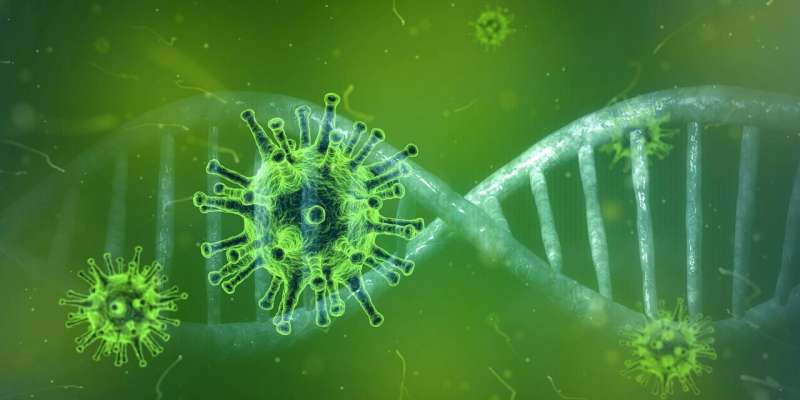Credit: Pixabay/CC0 Public Domain
New research from Cleveland State University could lead to improved antiviral treatments and vaccines for COVID-19 and similar viruses. An article published this week in the American Society of Microbiology's Journal of Virology provides significant insights into the host-virus relationship of SARS-CoV-2, the virus that causes COVID-19.
The research team, led by Barsanjit Mazumder, Ph.D., professor of molecular genetics at CSU's Department of Biological Geological and Environmental Sciences and the Center for Gene Regulation in Health and Disease, includes fellow CSU colleagues Abhijit Basu, Ph.D., senior staff scientist and postdoctoral research associate and Anton A. Komar, Ph.D., professor and director, Center for Gene Regulation in Health and Disease.
The team also includes Srinivasa Penumutchu, Ph.D. and Blanton S. Tolbert, Ph.D. in Case Western Reserve University's Department of Chemistry, as well as Kien Nguyen Ph.D., Uri Mbonye, Ph.D. and Jonathan Karn, Ph.D., professor and chair, Department of Molecular Biology and Microbiology, and director, Case Center for AIDS Research at the CWRU School of Medicine.
"We discovered a novel communication route between the SARS-CoV-2 virus and human lung cells," Dr. Mazumder said. "This work showed how the COVID-19 virus uses a specific signal within its own RNA sequence in communication with the signal generated from human lung cells. The mechanistic insights about this communication may be crucial in developing the next-generation of mRNA vaccines and targeted therapeutic strategies against this virus."
The research team showed that communication between the spike (S) protein in the virus with the specific receptor on the surface of lung cells leads to the change in the expression of the viral genetic information inside the cells that may be important to what is known as "viral fitness," or the "capacity of a virus to produce infectious progeny in a given environment."
"This work will have real-world ramifications and could change the trajectory of the research on SARS-CoV-2 and the COVID-19 pandemic," said Meredith Bond, Ph.D., CSU interim vice president of research and innovation and dean of the College of Sciences and Health Professions. "It reflects greatly on the expertise of CSU's faculty, the strength of interdisciplinary intercollegiate collaboration and affirms Cleveland's world-class stature for research and medical innovation."
More information: Abhijit Basu et al, A structurally conserved RNA element within SARS-CoV-2 ORF1a RNA and S mRNA regulates translation in response to viral S protein-induced signaling in human lung cells, Journal of Virology (2021). DOI: 10.1128/JVI.01678-21
Journal information: Journal of Virology
Provided by Cleveland State University























